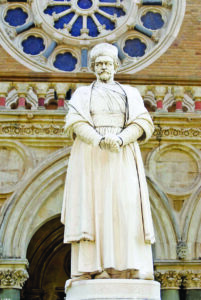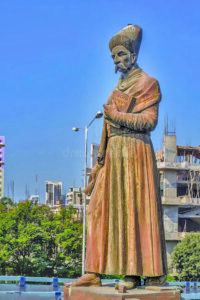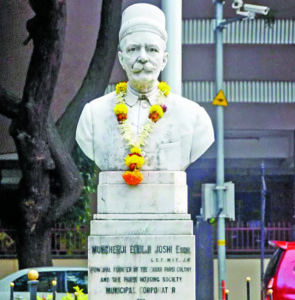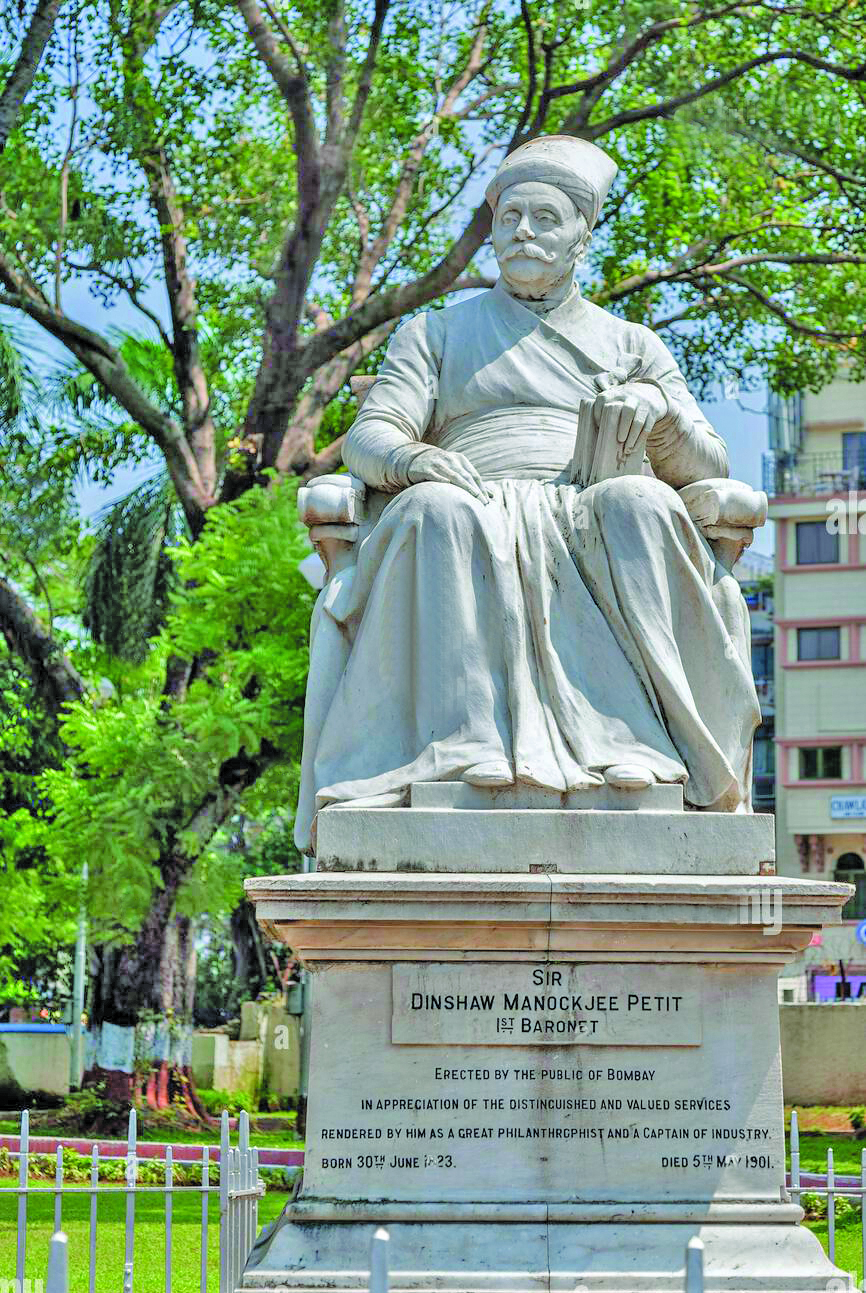 Parsi Times presents the concluding part of our popular series highlighting some of Mumbai’s prominent statues, by Dara Khodaiji
Parsi Times presents the concluding part of our popular series highlighting some of Mumbai’s prominent statues, by Dara Khodaiji
Mumbai is adorned with some brilliant displays of statues of the British, Parsis and great Indians, at various locations. These speak of the history of our nation and our city… in stones, marbles and bronze. Continuing our the final part of our series…
Sir Dinshaw Maneckji Petit’s statue is situated just opposite August Kranti Marg (Gowalia Tank). Sir Dinshaw Petit was a business entrepreneur who started the first textile mills in India. A great philanthropist, he received the accolade of Knighthood in 1887. In 1893, he became Sir Dinshaw Petit, the first Petit Baronet of the Petit Hall. His daughter, Mithuben Petit was a woman activist who participated actively in the Indian Independence Movement and was at Gandhiji’s side at Dandi, when in defiance to the British law, he made salt. How the French patronym ‘Petit’ came to be associated with his family is worth knowing… in 1785, one Nusservanji Dinshaw came from Surat to Bombay seeking his fortune here. He started working as a shipping agent and achieved success trading with the French, who because of his small stature affectionately called him ‘Le Petit Parsi’. The name stuck, and in time, became one of the most famous names among the Parsis!
Sir Cowasji Jahangir Baronet’s statue stands in the gardens of the Bombay University, proudly in elegant Parsi regalia. The baronet’s tale begins when his great-grandfather and two-great-uncles, migrated to Mumbai and ventured to china, where they traded in opium, amassing humungous wealth. They were so flushed with the cash, that became bankers and readily funded various British clients. This how the Jehangir family earned for themselves the cognomen ‘Readymoney’!
 Dadar Parsi Colony! If here is a utopian spot in the mad, mad, mad world of Mumbai, it is this, it is this, it is this! The idea came from the need of developing a new locality post 1895’s plague pandemic. The person responsible for the creation of the Dadar Parsi Colony was Muncherji Edulji Joshi, a civil Engineer with BMC. He was supported in this venture by other like-minded Parsis, like Ardeshir Homavazir and Bapaimai Dalal. His bust stands near the entrance of the colony and the grateful residents bow their heads in thanks for creating this little heaven and haven in claustrophobic Mumbai!
Dadar Parsi Colony! If here is a utopian spot in the mad, mad, mad world of Mumbai, it is this, it is this, it is this! The idea came from the need of developing a new locality post 1895’s plague pandemic. The person responsible for the creation of the Dadar Parsi Colony was Muncherji Edulji Joshi, a civil Engineer with BMC. He was supported in this venture by other like-minded Parsis, like Ardeshir Homavazir and Bapaimai Dalal. His bust stands near the entrance of the colony and the grateful residents bow their heads in thanks for creating this little heaven and haven in claustrophobic Mumbai!
For years, many wondered whose statue was it that stood atop the 40 feet tall pillar, right opposite the Byculla Fire Brigade Station. This is the statue of Curshedji Maneckji Shroff. The statue is famously known as the ‘Khada Parsi’. Maneckji ran a catering business, titillating the palates of the maharajas, rajas and the princes. He was a leading advocate for girls’ education and established a school in his own bungalow at Byculla. Three years later he shifted the school to the Fort area, naming it ‘Alexandra Native Girls English Institution’. Years later, the school was renamed Alexandra Girls’ High School. Curshedji ‘Khada Parsi’ Shroff lived up to the ripe old age of 80, passing away in 1887.
In the theses on the philosophy of History (the Seventth Thesis) by Walter Benjamin, we read “Every monument of Civilization is a monument of barbarism.” No! Not always. The Parsis who were honored into perpetuity by their statues, had carved out and sculpted their names through tireless service to the community and the country, through philanthropy, politics, industries, education, women emancipation, city welfare, community welfare, and public service.
- 48 And Still Going… Er… Um.. Strong! - 8 February2025
- Parsis – The Sweetest Bunch! - 28 December2024
- Hep Grannies, Swingin’ Grandpas!’ - 10 August2024
